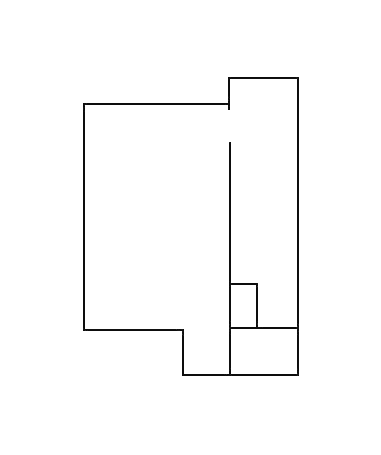Maggie Carson Romano | Of Light and Weight
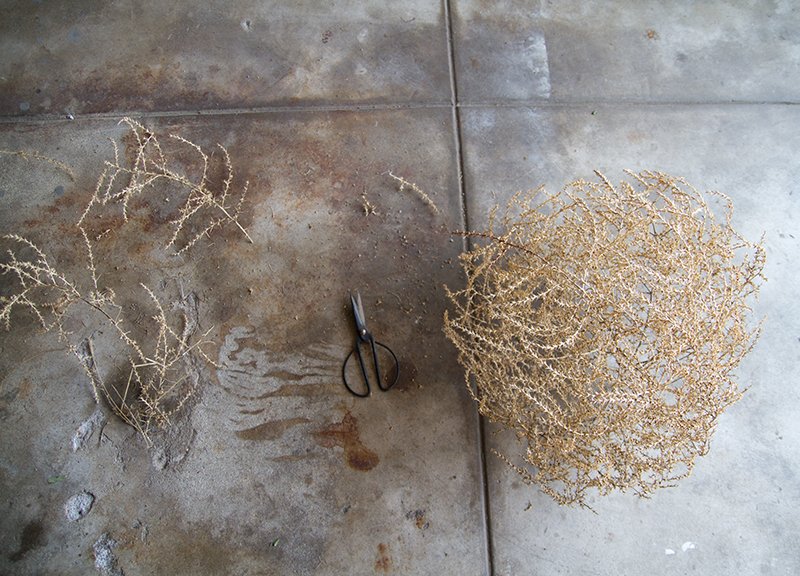
Interview and Essay by Adam Boehmer
Photographs by Joel Kvernmo and Sierra Stinson
The earthquake was cream-colored and we felt buoyant in its heave. Maggie’s eyes met mine and the 5.0 held us breathless for a few seconds as her house felt made of driftwood, absorbing the force before settling back into its sparse charm. Full of peace and a sense of adventure, we immediately wanted it to return. Later on she would say, “Wasn’t that earthquake beautiful?”
Welcome to the world of the artist Maggie Carson Romano.
Last spring I visited her Culver City home and studio in Los Angeles for a week, hoping to observe first-hand her process of charging simple materials with concepts so well-honed the objects and installations become needed, missed, connected to the modern person’s sense of aesthetic and survival.
Simply put, her work is transformative: to the materials and to the viewer. An antique misery whip is rendered useless but gorgeous by being dipped upside down in the rubberized white material intended only for the tool’s handles. The missing leg of a seaside motel’s bedside table is healed with sand cast solid from just outside the motel room’s door. Long-standing cracks of a neighborhood’s worn street are filled with 24k gold leaf. Maggie’s work is both heavy and uplifting, and her intimate process often leads to a public shift of consciousness.
“Especially on windy days, it feels like a box kite,” Maggie says about her home and backyard studio, connected by a huge swath of almost-white concrete that has become an exposed part of her studio practice. “I’ve been exploring the strength and fragility of concrete,” she says, as she lays organic clippings from trees and flowers next to long, erratic fractures in the driveway, photographing them for studies. “The tossed-away fragments echo the cracks. I love when two opposite things echo and mimic each other, their differing states of growth and decay, but also their common fragility.”
Walking with Maggie in her neighborhood is an exercise in acute beauty. The tectonic plates of the sidewalk, the subtle shift of off-white tints of paint on nearby buildings, sunbeams over the old industry of Culver City all become impetus for aesthetic discussion, or simply just appreciation.
What is inspiring you to create these days?
MCR: My days are currently filled with surfing and flower arranging, and while disparate in many ways, they are both solitary activities amidst two of natures most fascinating elements, and in opposite scales. The power of the ocean has cast a significant spell over me and occupies an enormous amount of my headspace. After surfing in the morning, whenever I close my eyes later in the day I see the swell of a wave building behind my eyelids, but never breaking.
The work I am making now stems directly from consistent experiences of that infinite immensity. When I am not in the ocean I am working with flowers under the influence of their delicate and fragile beauty. In my floral studio I am constantly concerned with controlling the climate. The wrong temperature or humidity can be catastrophic to the work at hand. I powerlessly watched some beautiful lilacs perish in a heatwave in April and there was nothing to be done about it.
So the balance between control and a powerlessness is something that I wrestle with on a daily basis. Finding this paradoxical balance has been at the core of my studio practice since the beginning and is intrinsically tied to many themes present in my work. There is often times an element of meticulous control responding to an element of reckless chaos in my work, and at the center I usually find a sensitive subject hanging in delicate balance.
In the past, Maggie has also integrated technology into her work in surprising but calibrated ways, building responsive systems of decay in contained environments. In her piece, “What made the wound, wound the thread” a heavy rubber balloon breathes in and out from a helium tank, responding to the noises inside a gallery space by filling with both gas and saltwater, dripping the water onto a foundation of concrete, which frosts over time with crystalline salt.
Talk with me about your past use and current connection to technology:
MCR: I grew up in a house full of gadgets and from a very young age have had a sense of wonder around the usefulness of new technology and how it can be applied outside of it’s intended purpose. I have always been interested in how the tools we make mimic our own human design, sensors mimic our own responsiveness, cameras mimic our vision, etc. Technology that allows us to explore and understand our world beyond our own human ability fascinates me. I allow technology into my work when it allows me to accomplish something I couldn’t do without it, and it’s inclusion must be both pragmatic and elegant.
Another facet is that I have always been intimidated by technology and it takes an enormous amount of willpower to circumvent what would otherwise be a crippling anxiety that I have surrounding complex systems. There have been years of my practice when I have abandoned technology altogether and resorted to solely working with physical materials, but it always returns.
Maggie is sitting on the stitched-together concrete planes of her driveway, half in sunlight, half in the shadow of her studio, delicately applying gold leaf down the central vein of a straw-colored tumbleweed. “This is such an intricate process, and this bush is so thorny!” We both laugh. She tells me this piece is about untethering, which is inherent in the essential archetype of the tumbleweed. She’s realized she’s been unanchoring her work incrementally since she graduated from University of Washington with her MFA and moved to New York City.
Untangling from past systems, allowing more poetic assessment of her pieces and process, Maggie is moving forward into a spaciousness and simplicity, echoed by her California environment, which involves an intense connection to nature, movement and the ocean.
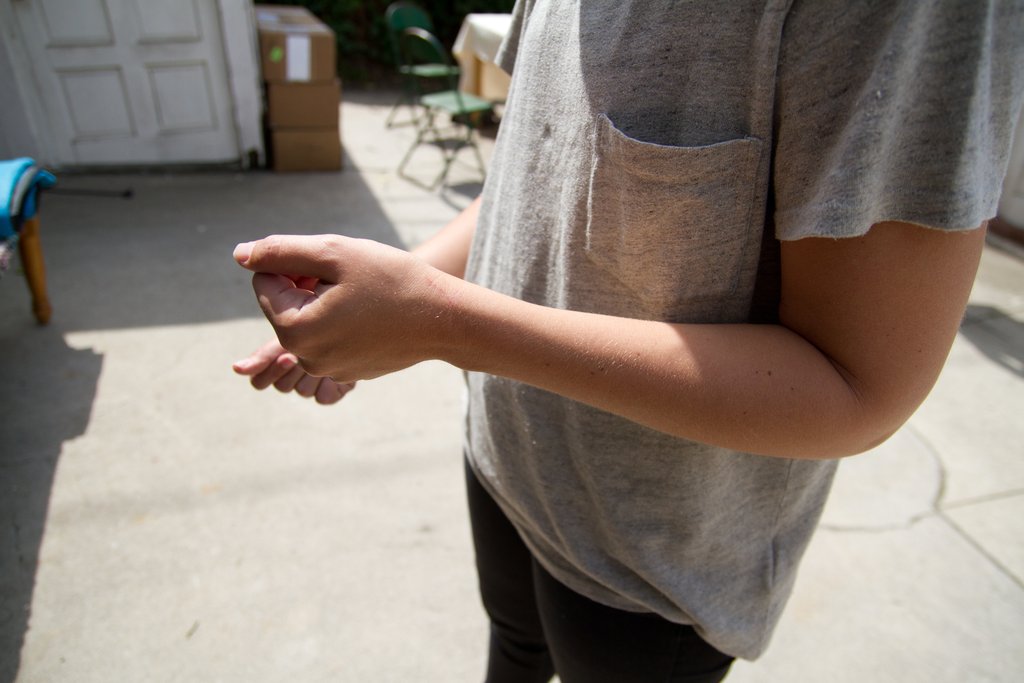
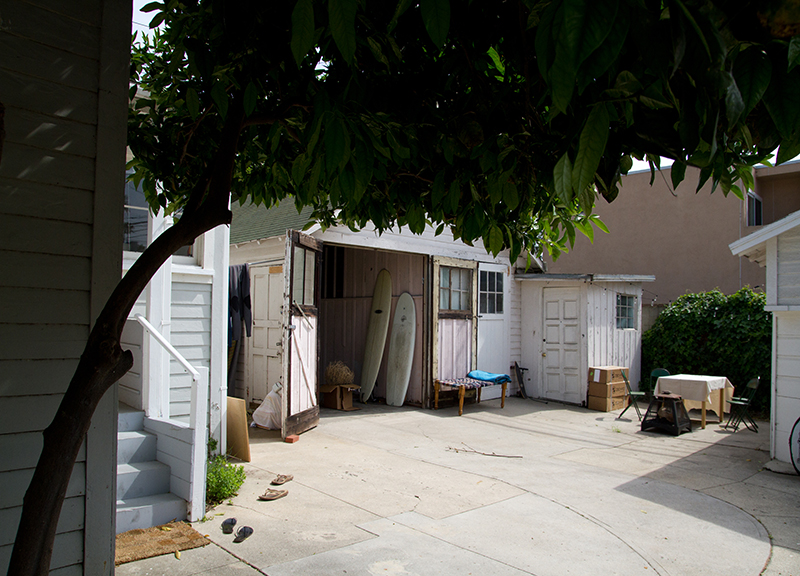
What was your practice like in New York City? How has location and city affected/changed your work?
MCR: My studio in New York was an incredible sanctuary from the rest of my life in the city. It was an hour commute from where I lived which included a mile of walking on each end of the route. I really had to earn my time there. In the winter, the concrete floor was heated and I kept the space almost entirely empty. The ceilings were high with wood beams and the windows were big, and there was a loft. I spent a lot of time on that warm floor, a lot of time thinking and tinkering on a small scale to avoid filling the space with anything.
The luxury of space and privacy was unmatched, but the remoteness also meant it was difficult for me to obtain materials and get them to the studio so most of what I worked with I got from the hardware store on the corner. I made a cat whisker radio, which I see now spoke to the isolation I felt out there. My work really pared down from complex systems to simple explorations of mundane fascinations. As with anything though, it wasn’t perfect. It was above a kale chip factory and reeked sweetly of the stuff. In the summer, little green flies would come in through the windows and eat me alive, but I loved being there.
Now I commute barefoot all of 5 yards from the back door of our house to the barn doors of my studio. But to be honest, my entire life here is my studio. The ocean is as much of a creative space as anything. I do most of my brainstorming in the shower and in the car. Water, salt, wind, and sunlight are all elements that are returning to my work in new ways. Getting these things back gives them a new life in my work that is really positive and exciting. At the same time, isolation has gone from a pure luxury to a constant. The bliss of working from home is often tempered with a persistent solitude.
Early in the morning after coffee, eggs and fresh oranges from her yard, we decide to explore Malibu. We drive and drive and Maggie leads me to a hidden beach. We climb up an arduous ravine where we must use our hands on the sides of the wind-sculpted walls to steady ourselves. At the top, we see our destination, a hidden cove, and after a serpentine downward hike, we find ourselves laid out next to the great blue Pacific, white water breaking across a stretch of marbled rock slick with dark green seaweed. Above the cavernous walls that protect this place, a few 10 million dollar homes sit like monuments. The sun is blinding and we quickly get hot enough to wade into the water.
You are a photographer as well, and work with light. How does this affect your more sculptural, object-based work?
MCR: Almost all of my sculptural work has a reflective element to it so that I can capture the light within a space and pull it from context to enable it to become even more than it already is. I am extremely sensitive to light so reflective material holds a certain fascination for me. At the onset of my migraines when I first begin to experience auras, my eyes will be caught by anything reflective. It can be anything from the head of a nail in the wall, or the sliver of a mirror almost out of view, or a gum wrapper. These little details are never something I would have otherwise noticed. You will often see mirrors, foil, gold leaf, pyrite, salt crystals, and glass employed as light sources within my sculptures to pull light out of context and make it tangible for others.
After a day of sun-worshipping, we return to Maggie’s home, a space alive with light and air: all-white walls that carry and hold the contents, including us, in an effortless way.
There is finesse in her life here, and a seamlessness between living and working. She brings out two glasses of rose that I notice immediately are crystal because of their fragility, weight and tone. We cheers and hydrate and start to clean up for the night. Los Angeles is quickly turning into it’s dusty-evening self, and later we will meet up with several other artists also living and working in the city. We’ll share stories of success, hardships, and the burgeoning LA creative community. The chilly desert air will pass over us like rudders out on the sidewalks of Los Feliz, each of us a working piece in the complex system of the city.

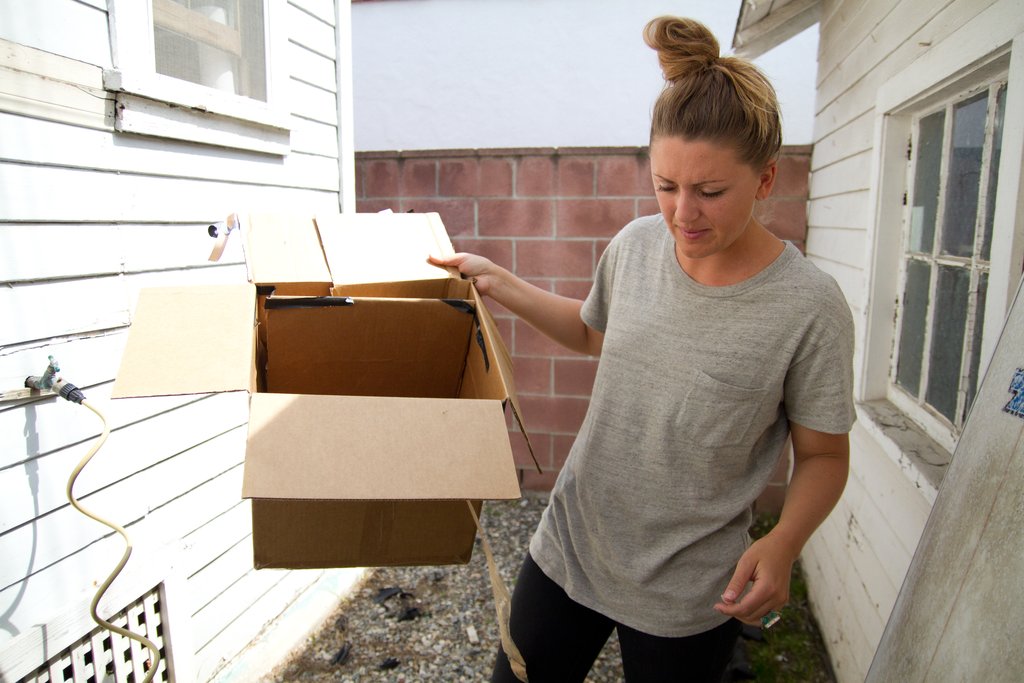
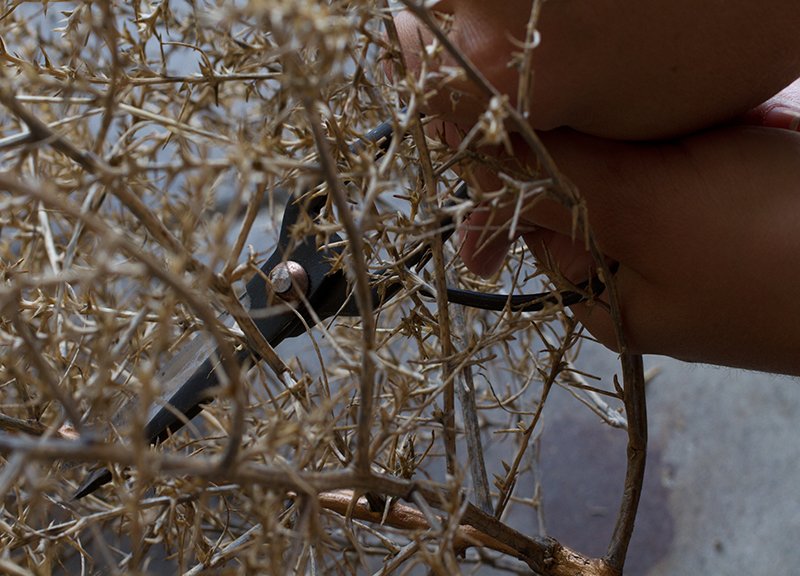
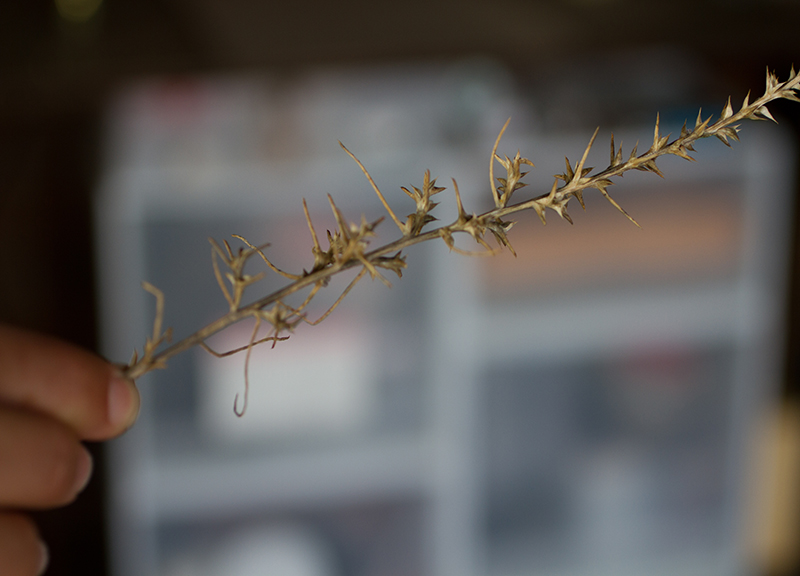

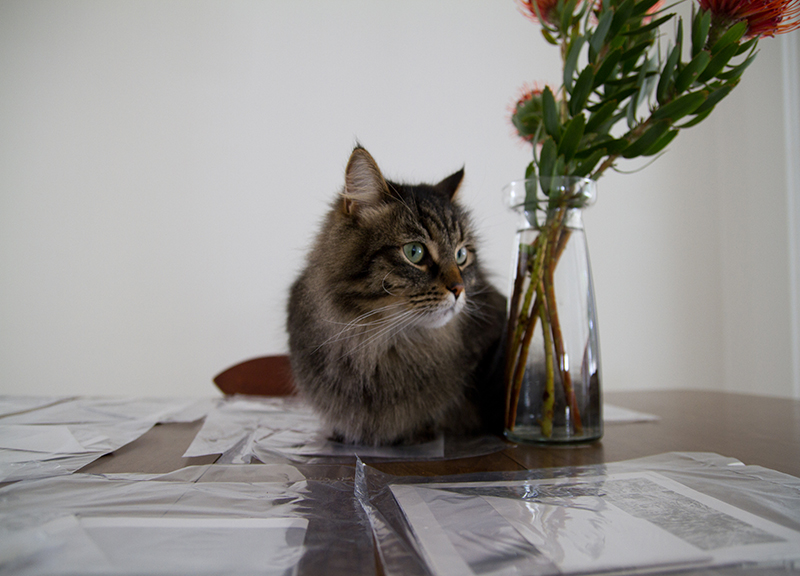
Back to In the Studio
